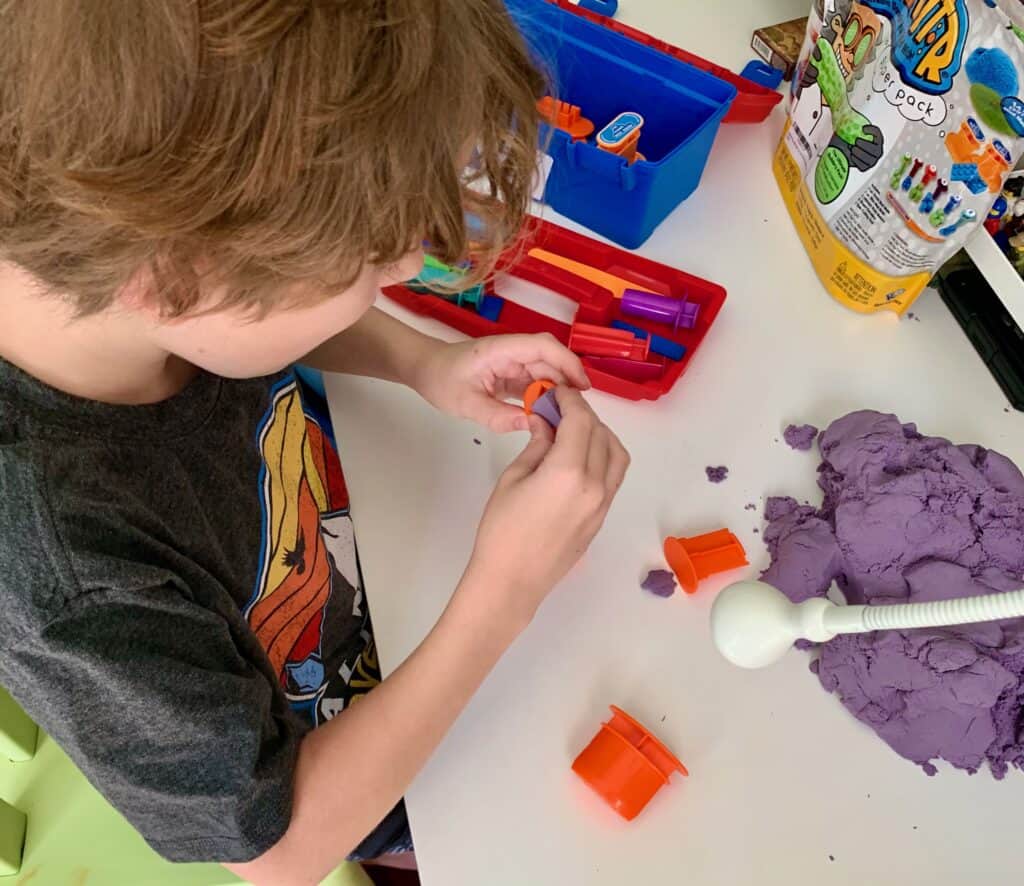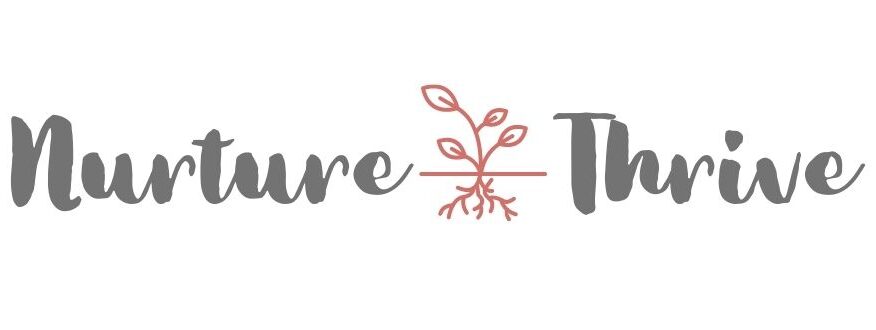Inside: Sensory brain breaks help kids de-stress, reset, and re-center and also help kids solidify what they learn. Any activity that immerses kids in their environment is a sensory break. These are great for virtual learning but also anytime kids need a reset.
Stress in children can manifest as trouble sleeping, outbursts, less risk-taking, more risk-taking, withdrawal, impulse control issues, more picky eating, and so many various ways. Anxiety or unresolved stress can take many forms.
Parents ask me how to help their kids handle stress and the first thing I say is to prioritize play. Free play. Outdoor play. Play with friends. Any and all kinds of play.
Play allows kids to work through confusing issues or stress and solidify what they learn. Play also allows kids to get out of their minds and be grounded in their environment. This helps kids ground themselves — reset — re-center. To move from thoughts of worry to being immersed in play.
The Benefits of Sensory Play As a Brain Break: State of Flow
Sensory play is a great way to transition from school to free play. Or when your kids simply can’t get into playing and need to reset. Sensory play can also be broken down into smaller segments throughout the day for brain breaks.
A brain break is just a fancy way of saying take a break from seated, and usually passive, learning activities. Research shows the brain needs movement, motion, and hands-on experience to learn.
Sensory play can be especially helpful if your child is doing virtual learning.
Sensory play can help balance all of that focused attention and screen time with ways that actually relax the mind. Maybe skip the “virtual” brain breaks if you can and do something sensory instead!

Sensory play immerses the senses, and multi-sensory is best. It doesn’t have to be complicated, you don’t need to make a new sensory bin every day or even one at all — rice and cups work fine. And if messy play bothers you, do it all outside! You can be creative or simple — the choice is yours.
We have a designated area at the desk in the playroom for messy play. My son has a pile of play dough or kinetic sand-like dough (his favorite is Mad Mattr, and I love that it is non-toxic and made in Sweden). My son plays with it every day — he pounds it, shapes it, molds it, mashes it — it is so therapeutic for him!
Related: My Favorite Sensory Tools and Resources
Sensory play allows children to immerse themselves in the moment and in their senses — this is like being in a state of flow.
Ashley Soderlund
Being in a flow state is when you are completely absorbed in an activity for its own sake. It is when you are immersed in the present moment without thinking about it.
Flow states occur when your child is deeply absorbed in play. This is when they discover new things, increase their exploration, and even work through stressors they may feel. Play is therapeutic for kids. Sometimes, they need a little help getting there, and that is where sensory activities can help kids get back into that state of flow.
All children use play therapeutically as a way of dealing with stress.
David Elkind, Child Psychologist
State of flow or immersive play is a kind of mindfulness — arguably, one of the best kinds of mindfulness for kids. Even better? Try sensory activities outside — simply swinging can be an awesome 15-minute brain break for kids.
52 Simple Sensory Activities for Kids
Tactile Activities
- Play with play dough or clay.
- Use different materials (sandpaper, fabric, bubble wrap) to make texture cards.
- Play with kinetic sand and molds.
- Play with cloud dough.
- Play with foam or shaving cream.
- Play with slime or Oobleck.
- Play with water or take a bath.
- Finger paint.
- Play with sensory bins with rice, lentils, sand, or water beads.
- Play with sand and shovels.
Visual Activities
- Look at glitter sensory bottles.
- Look at discovery bottles.
- Read I Spy Books or play I Spy.
- Read.
- Paint with different types of paint and brushes.
- Free color.
- Color patterns.
- Make shadow puppets.
- Look at the stars.
- Take photos.
Auditory Activities
- Listen to music.
- Listen to the wind.
- Listen to an instrument.
- Sing.
- Go on a nature walk and listen for sounds.
- Read a rhyming book or make up rhymes.
- Listen to calming sounds.
Body Awareness Activities
- Swing.
- Jump.
- Climb.
- Spin around!
- Throw a ball, catch a ball, bounce a ball.
- Crawl through an obstacle course.
- Walk on a balance beam or a log.
- Give or get a tight hug!
- Walk like different animals.
- Dance!
- Play Simon Says.
- Play Freeze Tag.
- Play Head, Shoulders, Knees, and Toes.
- Play Hopscotch.
- Swing in a hammock.
Oral and Olfactory Activities
- Play with scented dough.
- Light a candle. After you are done, blow it out.
- Help make a snack and smell and taste each ingredient.
- Go on a nature walk and smell the flowers.
- Make gingerbread cookies.
- Blow bubbles.
- Blow sailboats with a straw.
- Make smoothies and drink it with a straw.
- Play the harmonica.
- Whistle.
Choose the activities your child will love the most — every child is different. Also, the ones you know help your child relax— some kids love to swing, some kids need to jump, some kids need to chew or suck — so make an extra thick smoothie and give them a silicon straw for a bonus two-in-one — snack and sensory!
Free Printable: Sensory Activity Workbook
Another way to incorporate sensory brain breaks into your day is with a choice board. A choice board is precisely what it sounds like — you simply pick the square you want for that day!
I like this better than a calendar or a bucket list because you can do whatever fits that day, skip a day, or do two or more a day!
This free printable workbook includes a copy of the 52 Sensory Activities Printable, A Creative Choice Board for Summer, and a Sensory Brain Breaks Board for Fall, plus so much more!!!
Related Reading: Mindful and Sensory Activities To Help Children Break Free of Worry or Upset

 Say “Yes” to Childhood: A Guide for a Happy Family Life
Say “Yes” to Childhood: A Guide for a Happy Family Life